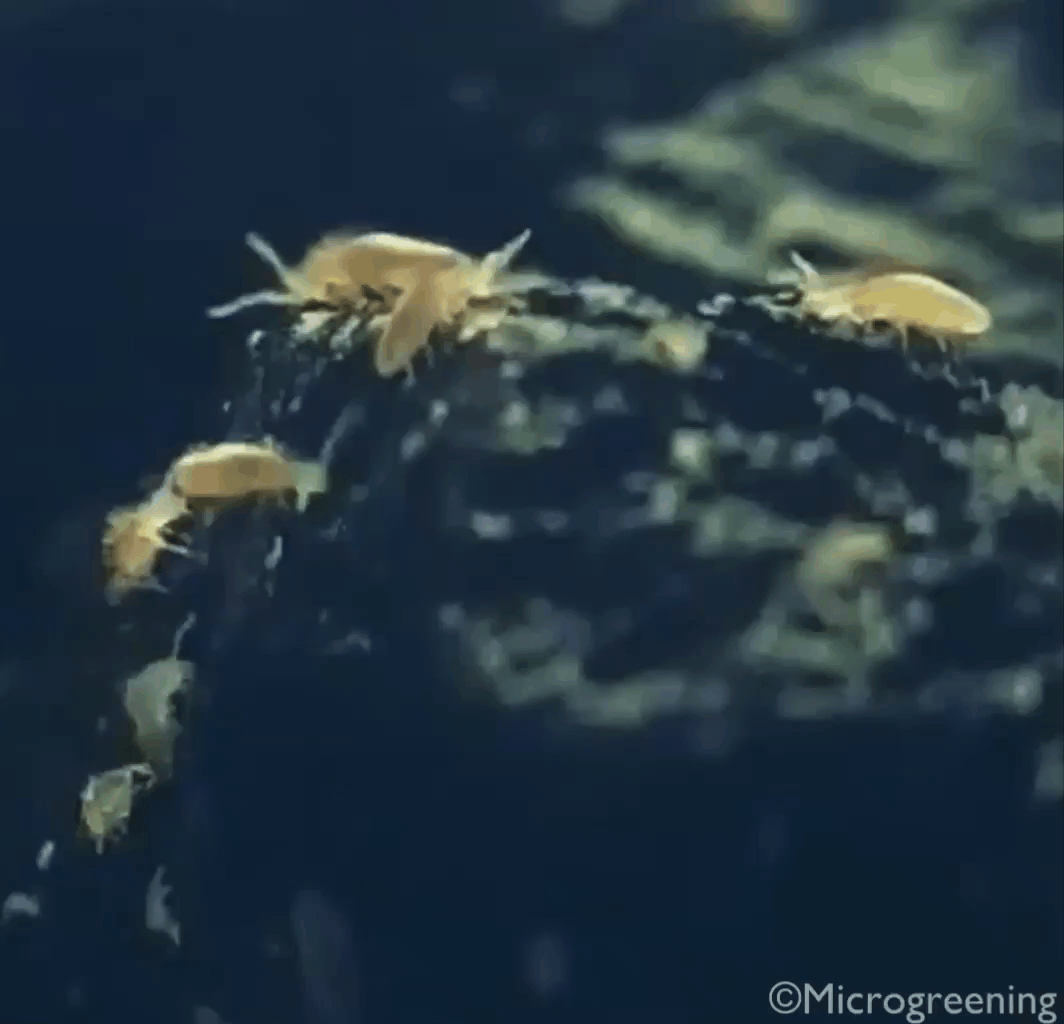5 Things You May Not Know About Springtails
As someone who loves talking about springtails, I am constantly amazed at how intricate these little creatures are. For a widespread and extremely successful species, this ancient among insects has some very interesting talking points.
I’ve compiled a list of some of my favourite things to mention when introducing springtails and hopefully they will inspire you to take a closer look at these extremely small creatures.
Springtails have achieved many milestones
Springtails are such a diverse and long running species that they have achieved many milestones that may surprise you.
- Springtails have broken the record for deepest living terrestrial animal after being found 1980 metres below a caves entrance (Krubera-Voronga caves, Georgia).
- Springtails have also been found on Mt Everest at a height of 6400 metres which makes them one of the highest altitude dwelling species.
- A springtail fossil is amongst the oldest fossils of an arthropod at an age of 400 million years old (for reference, the earliest living plant recorded on land was around 470 million years ago).
- With being found in every location in the world and being recorded as having between 2,000 and 100,000 in a square meter of soil, the springtails would’ve been recorded as the most abundant living insect in the world, beating ants which have an estimated population of up to 100 trillion individuals total. Unfortunately, we will explain why that title does not apply anymore in the next fact.
They are not classified as an insect
Even though springtails have all of the parts that you’d expect an insect to have, their lack of exposed mouth parts has made them fall outside what qualifies them as an insect. Their lack of exposed mouth parts is still effective for them due to their simple diet of broken down materials, bacteria and fungus. A springtail is regarded as collembola and lived alongside the insect lineage 400 million for the last 400 million years.
This does not mean that a springtail is obsolete. Much like our favourite plants, mosses, their unique way of life allows them to shine in their niche as they’ve watched others continuously adapt and reinvent themselves.
Not all springtails can jump
As springtails are one of the most successful, diverse and ancient species, there is no doubt that there would be many variants to suit their geographic location.
Springtails were named springtails due to their furcula, a spring-loaded appendage on the underside of their body which slaps against the ground and flicks them up unpredictably. For a springtail, jumping only serves purpose to escape predators.
In species like the onychiuridae, they have evolved to be deep under the surface of the soil. There is no use for jumping or for some, even the ability to see.
Springtails walking on still water
Springtails are hydrophobic
For a springtail that loves humidity, you’d be surprised to find out that they are hydrophobic due to a complex surface structure of their body.
Amazingly, they are so light and resistant to water that they can jump, land upside down on the waters surface and not even create a ripple.
Springtails compared to most other insects breathe through their skin, this means that having water resting on the surface of its body can cause respiratory issues.
Even if water was to temporarily surround them, the surface of a springtail has a multi-leveled structure where the upper level is comprised of mushroom shaped pieces, allowing air to be trapped underneath when when water is resting on top. I have witnessed groups of springtails being submerged, connecting a large bubble together as they stay close only to reach the waters surface and pop open completely dry.
As an additional precaution, some springtails have tiny hairs that also collect water away from the skin.
Unfortunately, water droplets can still be a problem for springtails in certain circumstances, where they can accidentally break into a water droplet and be trapped inside the surface tension.
They may have been “pollinating” before flowers existed
This fact was by far the biggest revelation of everything I have been working on in my hobby of moss and springtails. A while back, I came across a university journal entry that links an increase in sexual reproduction of moss through a springtails manual intervention. This article suggested that there are springtails that are attracted to female moss pheromones and help deposit the male sperm.
Our article, including the journal entry, read here.




